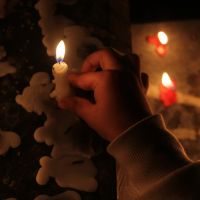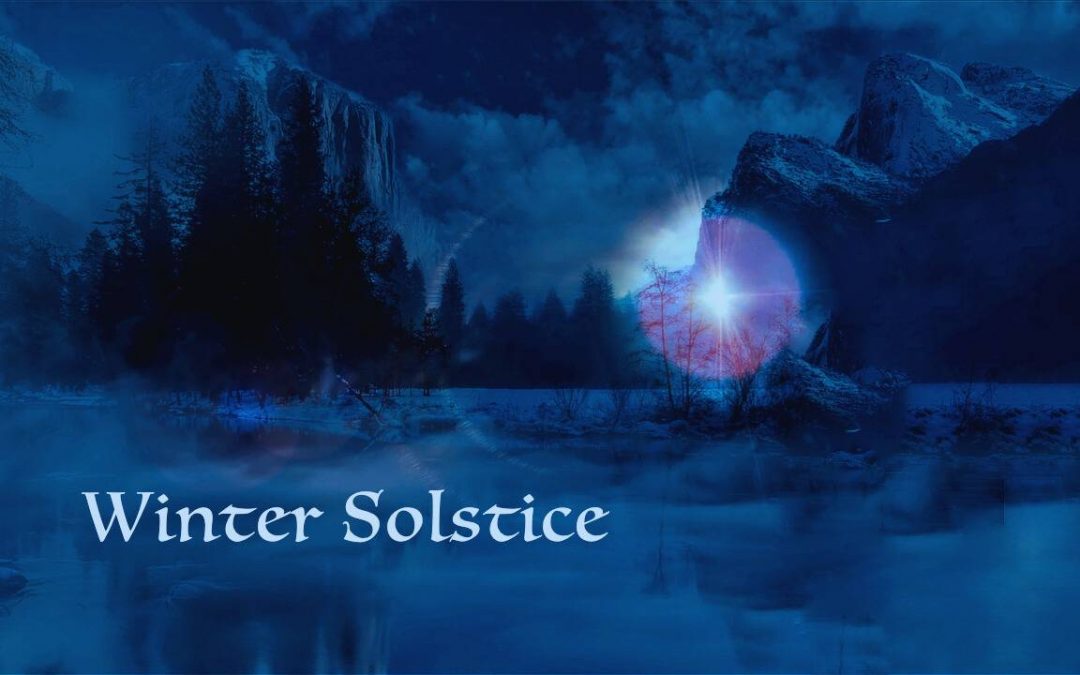Throughout ancient history, the shortest day referred to as Winter Solstice has been a catalyst for joyous celebrations and meaningful rituals across diverse cultures globally. Composed while living in Alaska, Winter Solstice featured in my album Polar Suite, received an artist award from the prestigious Rasmuson Foundation. As of now, “Winter Solstice” has garnered 15,000 views on YouTube and over 13,000 plays on SoundCloud. My music encapsulates the profound essence of winter, a season enveloped in darkness that prompts introspection into our own existence. The journey of a lonesome cello, which, while surrendering to the elements of the Arctic winter, serves as a reminder of how deeply intertwined landscape and emotion are.
Winter Solstice around the World
The winter solstice marks the briefest day and the lengthiest night of the year, occurring in late December in the Northern Hemisphere and in June in the Southern Hemisphere. Across various cultures, from Ancient Romans to Indigenous Americans, the winter solstice has been a time of festive gatherings and holiday celebrations. For countless centuries predating recorded history, the winter solstice and the symbolic resurgence of the sun have sparked diverse celebrations and rituals across societies worldwide. Below you can read about Eight Global Winter Solstice Celebrations.
 St. Lucia’s Day In Scandinavia, the traditional Festival of Lights pays tribute to St. Lucia, an early Christian martyr. This celebration, however, became intertwined with pre-existing Norse solstice customs after a substantial number of Norsemen embraced Christianity around 1000 A.D. According to the old Julian Calendar, December 13—the day traditionally recognized as the one on which the Romans executed Lucia in 304 A.D. for delivering food to persecuted Christians hiding in Rome—coincided with the shortest day of the year.
St. Lucia’s Day In Scandinavia, the traditional Festival of Lights pays tribute to St. Lucia, an early Christian martyr. This celebration, however, became intertwined with pre-existing Norse solstice customs after a substantial number of Norsemen embraced Christianity around 1000 A.D. According to the old Julian Calendar, December 13—the day traditionally recognized as the one on which the Romans executed Lucia in 304 A.D. for delivering food to persecuted Christians hiding in Rome—coincided with the shortest day of the year.
As a symbol of illumination, Lucia and her commemorative day seamlessly integrated with solstice practices like lighting fires to dispel spirits during the longest, darkest night of the year. On St. Lucia’s Day, young girls in Scandinavia don white dresses adorned with red sashes and wreaths of candles on their heads. This attire pays homage to the candles Lucia wore on her head to light her way as she clandestinely transported the forbidden food.
Dong Zhi Dong Zhi, the Chinese winter solstice celebration, meaning “Winter Arrives,” marks the return of longer days and the anticipation of increased positive energy in the upcoming year. Taking place just six weeks before the Chinese New Year, this festival holds distinct significance for many, believed to be the day when everyone ages by one year. Initially rooted in a potential harvest festival, where farmers and fishermen took respite to celebrate with their families, Dong Zhi has evolved over time.
While not an official holiday today, it remains a meaningful occasion for families to come together, commemorating the passing year and extending good wishes for the future. In southern China, the quintessential dish for this celebration is tang yuan, glutinous rice balls often vibrant in color and served in sweet or savory broth. Meanwhile, in northern China, plain or meat-stuffed dumplings take center stage—a hearty and nourishing choice for a midwinter festivity.
Saturnalia Many of the conventional midwinter celebrations in Western culture, including aspects of Christmas, trace their origins to Saturnalia—an ancient Roman solstice festivity dedicated to Saturn, the god of agriculture and time. Originating as a one-day event earlier in December, this pagan celebration evolved into a boisterous weeklong revelry spanning from December 17 to 24. During this exuberant and widely embraced Roman festival, societal conventions were set aside as people engaged in activities such as gambling, drinking, feasting, and exchanging gifts.
 Shab-e Yalda During the lengthiest night of the year, Iranians worldwide observe the ancient festival of Shab-e Yalda, meaning the “Night of Birth,” commemorating the triumph of Mithra, the Sun God, over darkness. According to tradition, people come together on this extended night to shield one another from malevolence. They illuminate the darkness with fires, engage in acts of charity, and share wishes. Friends and family partake in festive gatherings, indulging in nuts, pomegranates, and other celebratory foods, while also delving into the poetry of the 14th-century Persian poet Hafiz. Some choose to remain awake throughout the night, reveling in the moment when the sun rises, symbolizing the dispelling of evil and the heralding of goodness.
Shab-e Yalda During the lengthiest night of the year, Iranians worldwide observe the ancient festival of Shab-e Yalda, meaning the “Night of Birth,” commemorating the triumph of Mithra, the Sun God, over darkness. According to tradition, people come together on this extended night to shield one another from malevolence. They illuminate the darkness with fires, engage in acts of charity, and share wishes. Friends and family partake in festive gatherings, indulging in nuts, pomegranates, and other celebratory foods, while also delving into the poetry of the 14th-century Persian poet Hafiz. Some choose to remain awake throughout the night, reveling in the moment when the sun rises, symbolizing the dispelling of evil and the heralding of goodness.
Inti Raymi In Peru, where the winter solstice falls in June, the Inti Raymi, meaning “sun festival” in Quechua, is dedicated to honoring Inti, the sun god. In ancient times, before the Spanish conquest, the Incas observed a three-day fast leading up to the solstice. At dawn on the fourth day, they assembled in a ceremonial plaza, awaiting the sunrise. Upon its  appearance, they bowed before it, presenting golden cups filled with chicha, a sacred beer made from fermented corn. The ceremony included the sacrifice of animals, including llamas, and the use of a mirror to focus the sun’s rays and ignite a fire. Although the Spaniards initially banned the Inti Raymi holiday after the conquest, it was later revived in the 20th century, albeit with simulated sacrifices, and continues to be celebrated today.
appearance, they bowed before it, presenting golden cups filled with chicha, a sacred beer made from fermented corn. The ceremony included the sacrifice of animals, including llamas, and the use of a mirror to focus the sun’s rays and ignite a fire. Although the Spaniards initially banned the Inti Raymi holiday after the conquest, it was later revived in the 20th century, albeit with simulated sacrifices, and continues to be celebrated today.
Shalako For the Zuni, a Native American Pueblo people in western New Mexico, the winter solstice signifies the start of the year and is marked by the Shalako ceremonial dance. After days of fasting, prayer, and observing the sun’s movements, the Pekwin, or “Sun Priest,” announces the moment of itiwanna—the sun’s rebirth—with a mournful call. This signals the commencement of rejoicing and dancing, with 12 kachina clowns in intricate masks joining the Shalako, towering 12-foot-high effigies with bird heads considered messengers from the gods. Following four days of festivities, new dancers are chosen for the next year, marking the beginning of the annual cycle.
Soyal Similar to the Zuni, the Hopi of northern Arizona, believed to be descendants of the Anasazi people, celebrate the winter solstice with the Soyal ceremony. The Sun Chief, akin to the Zuni Pekwin, announces the solstice’s sunset, initiating an all-night ceremony featuring fires, dance, and sometimes gift-giving. The Hopi sun-watcher’s role extends beyond the winter solstice, as his observations of the sun influence crop planting and the observance of Hopi ceremonies throughout the year.
Toji In Japan, the winter solstice is observed as a traditional practice focused on welcoming the new year with health and good fortune. Particularly significant for farmers anticipating the sun’s return to nurture their crops after a long winter, the Japanese light bonfires to encourage this solar resurgence. On December 22, Mount Fuji is adorned with large bonfires. A common winter solstice ritual involves taking warm baths scented with yuzu, a citrus fruit believed to ward off colds and promote good health. Public baths and hot springs often incorporate yuzu into the water during this time. Additionally, many Japanese people consume kabocha squash, known as Japanese pumpkin in the United States, on the solstice, attributing it to bringing luck.

